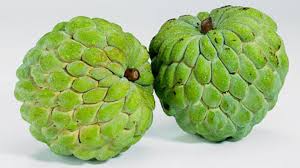
mauritiana may be evergreen or deciduous. Depending on the climate, the foliage of the Z. It is dark-green and glossy on the upper side and pubescent and pale-green to grey-green on the lower side. The leaves are about 2.5 to 3.2 cm long and 1.8 to 3.8 cm wide having fine tooth at margin. The leaves are alternate, ovate or oblong elliptic with rounded apex, with 3 depressed longitudinal veins at the base. mauritiana may be erect or wide-spreading, with gracefully drooping thorny branches, zigzag branchlets, thornless or set with short, sharp straight or hooked spines. The species varies widely in height, from a bushy shrub 1.5 to 2 m tall, to a tree 10 to 12 m tall with a trunk diameter of about 30 cm. Ziziphus mauritiana is a medium-sized tree that grows vigorously and has a rapidly developing taproot, a necessary adaptation to drought conditions. It is a fast-growing tree with a medium lifespan, that can quickly reach up to 10–40 ft (3 to 12 m) tall. It can form dense stands and become invasive in some areas, including Fiji and Australia and has become a serious environmental weed in Northern Australia. It is now widely naturalised throughout the Old Worldtropics from Southern Africa through the Middle East to the Indian Subcontinent and China, Indomalaya, and into Australasia and the Pacific Islands. The species is believed to have originated in Indo-Malaysian region of South-East Asia.
SEEMA REGI PANDU SKIN
The fruit's skin is smooth, glossy, thin but tight.

When slightly underipe, this fruit is a bit juicy and has a pleasant aroma. It can be oval, obovate, oblong or round, and can be 1-2.5 in (2.5-6.25 cm) long, depending on the variety. Ziziphus mauritiana is a spiny, evergreen shrub or small tree up to 15 m high, with trunk 40 cm or more in diameter spreading crown stipular spines and many drooping branches. It is also known as Chinese date, ber, Chinee apple, jujube, Indian plum, Regi pandu, Indian jujube, dunks (in Barbados) and masau (in Zimbabwe), is a tropical fruit tree species belonging to the family Rhamnaceae. The following is a list of common South Asian ingredients, as well as their names in various local languages spoken.SN/NC: Ziziphus mauritiana, Rhamnaceae Family This article attempts to centralize, compile and tabulate the various vegetables, fruits, grains and spices that are commonly employed in various South Asian sub-cuisines to help reduce this confusion in identifying and procuring various South Asian food ingredients, especially in the cross-regional, international markets/contexts. This further aggravates the confusion in identifying specific items/ingredients, especially for international consumers/expatriates looking to procure vegetables, fruits, grains and spices specific to Indian sub-cuisines.


Indian vegetable markets and grocery stores get their wholesale supplies from suppliers belonging to various regions/ethnicities from all over India and elsewhere, and the food suppliers/packagers mostly use sub-ethnic, region-specific item/ingredient names on the respective signs/labels used to identify specific vegetables, fruits, grains and spices based on their respective regions of origin. But for the connoisseurs, India offers a complex and eclectic array of sub-cuisines to explore, which are equally vegetarian friendly and a delight to the taste buds.Įven for South Asian people, this wide variety of vegetables, fruits, grains and spices used in various Indian sub-cuisines can be mind-boggling because of the variety of region-specific names used for identifying the food items. Most Indian restaurants serve predominantly Punjabi/North Indian cuisine, while a limited few serve a very limited choice of some South Indian dishes like Dosa.

Indian cuisine is overwhelmingly vegetarian friendly and employs a variety of different fruits, vegetables, grains, and spices which vary in name from region to region within the country. Terms used the recipes of varied Indian and other South Asian sub-cuisines sometimes tend to be multi-lingual and region-specific, mostly based on the author's specific sub-ethnicity, the popularity of a given vegetable/spice in a given sub-cuisine within South Asia, etc. South Asian cuisine encompasses a delectable variety of sub-cuisines and cooking styles that vary very widely, reflecting the diversity of the Indian subcontinent, even though there is a certain centrality to the general ingredients used. You can help by adding missing items with reliable sources. This is a dynamic list and may never be able to satisfy particular standards for completeness.


 0 kommentar(er)
0 kommentar(er)
